
1. The installer must be able to update the SQL Server database.
For Windows 7, your user profile must be in the Administrator group. You can then install by double clicking on the MSI file.
For Windows 8, start a Command Prompt using Run as Administrator.
Position to the folder: C:\Program Files (x86)\LANSA\x_win95\x_lansa\x_apps\IIPERSON.
2. Enter the following command and then press the Tab key.
msiexec.exe /I II
where II are your initials.
The MSI file name will be completed for you. Your command should now look like this:
Msiexec.exe /I IIPERSON_V1.0.0_en-us.msi
Press Enter. The Windows Setup dialog will be displayed:

3. Click Next to continue.
4. The End User License Agreement dialog is displayed.

a. An example license file is supplied in folder:
…\x_apps\x_Wix\Content\license.rtf
b. You should edit or replace this file to implement your company licensing terms if necessary.
5. Select the "I accept …." check box and click Next to continue:
6. You can now select the Installation Scope. Select Install just for you.
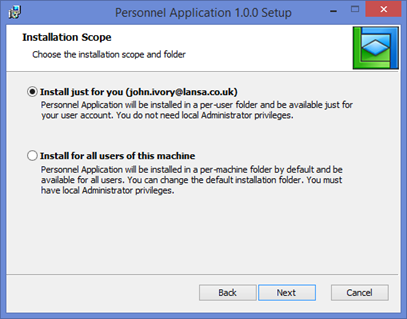
Both options will be shown in Windows 7 provided the installer is an Administrator and in Windows 8, provided the installation was started from a Command Prompt using Run as Administrator.
7. Click Next to continue. The Destination folder dialog will be shown:
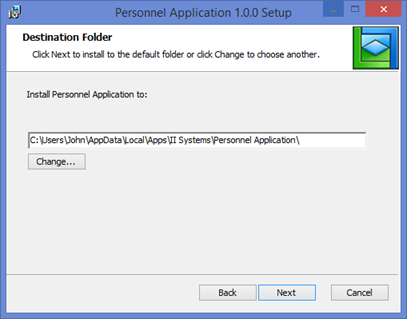
The Change button allows an alternative folder to be selected.
Notice that the suggested path includes the Company Name and Application Name:
. . .\II Systems\II Personnel System Standalone\
8. Click Next to continue. The Setup the Local Database dialog is displayed.

Notice that the parameters which were set to "prompt during installation" could be changed if required.
This installation must update the database to define the required application files and insert the file data. This means that the Setup Database check box must be selected.
An ODBC DSN entry is created named IIPERSON, pointing to the database server and database name defined by the package.
There is an option to suppress this dialog in the package definition. But it is rare that you would not need to offer the choice to Setup the Database. If needed you can suppress this dialog by changing Display DBMS Dialog to No:
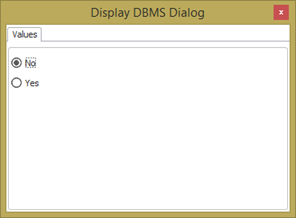
9. Click Next to continue. The Choose Setup Type dialog is displayed:
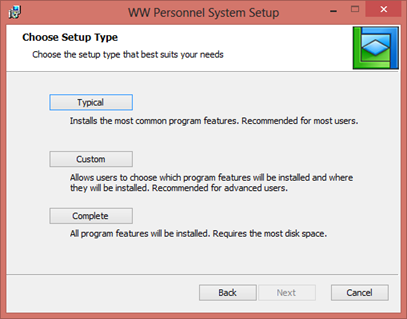
10. Select any option to continue. Cuurently, all setup types install the complete package.
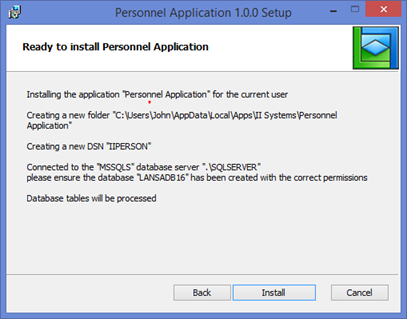
11. Click Install to continue.
The Installing . . . dialog will show progress with messages and a progress bar:
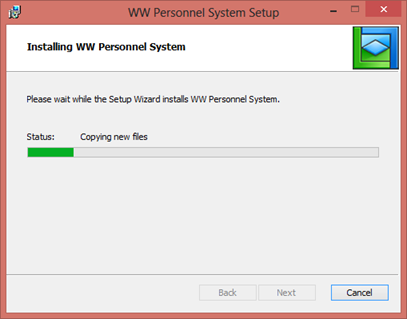
12. Click Finish to complete the installation:

Note that the Start II Personnel System check box is selected.
The form will run the standard Employees Application as a Stand Alone Windows application.
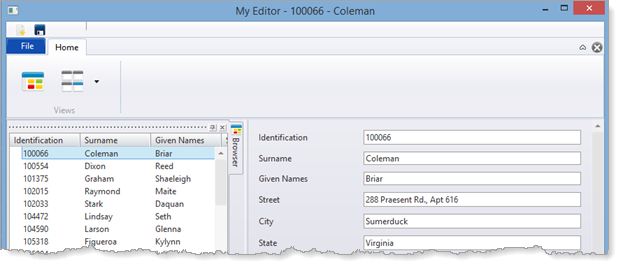
13. As per the application you tested earlier, you can now edit and save an employee record or create a new employee. Double click an employee in the browser list to open it in the editor. A number of employees may be opened, each in their own editor component instance.
14. Select Version 1 for the stand alone Personnel Application and click the Indicate the selected version or patch has been distributed  toolbar button. Version 1 can now no longer be opened or changed.
toolbar button. Version 1 can now no longer be opened or changed.
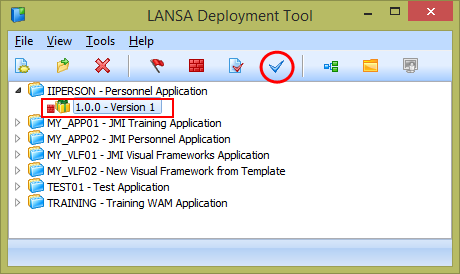
The View all objects included in the installation  toolbar button enables Selected Objects and Cross Reference Objects in the package to be reviewed.
toolbar button enables Selected Objects and Cross Reference Objects in the package to be reviewed.